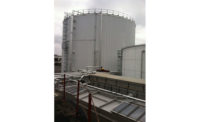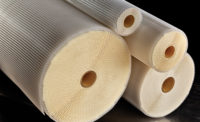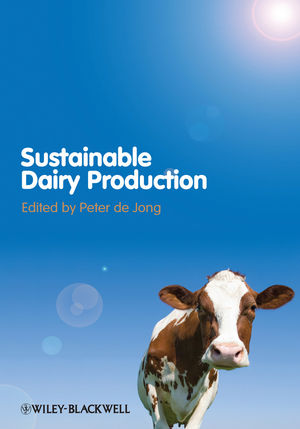Reap benefits from wastewater reduction initiatives
Dairy processors could significantly cut costs and improve efficiencies by implementing potent wastewater reduction initiatives.










Water is the lifeblood of dairy processing.
Leveraging a virtual waterfall of liquids is essential if operators are to keep processes running smoothly while ensuring facilities remain clean and safe. Yet the effective use of water still requires restraint.
Indeed, dairy processors often waste 20% to 30% of water through inefficiencies and negligence, reports Pat Walsh, applications development manager for Hach Co., a Loveland, Colo.-based supplier of analytical instruments, services, software and reagents that test the quality of water and other fluids.
"Water is a big part of producing anything in dairy, and processors heavily use it for cleaning, sanitation and general production," states Brett Robison, strategic business leader, food and beverage, for Kurita America (formerly U.S. Water Services Inc.), a St. Michael, Minn.-based provider of water treatment equipment, technologies, chemistries and engineering services. "Yet, changes in production with newer processes or applications and antiquated equipment can stress the wastewater system."
Because plant wastewater volumes might even be 60% to 70% greater than necessary, it is important that efficiency-minded processors gage water use during the various production procedures — including pasteurization, cleaning and sanitation, and boiler and cooling operations — and then use that baseline to monitor reduction efforts, he states.
"Identifying excess wastewater is the first step in incorporating reduction plans," agrees Jerome Korthase, technical sales manager – West, Atkore-Calbrite at Atkore International, a Harvey, Ill.-based producer of Calbrite-branded stainless-steel conduit equipment.
He notes that such plans can include incorporating state-of-the-art filtering systems and reducing dirt and contaminant harborages in plants to lessen the need for cleaning solutions.
"An increasing focus on sanitary management is forcing dairy processors to expand their cleaning operations," Korthase says. "And water is the primary cleansing medium."
In addition to curtailing water flow during processing and sanitation, operators could reduce wastewater by tending to cracked pipes, leaky or faulty valves, leaky seals or pumps, and bad or leaking flange/pipe connections in a timely manner, notes Marisa Vilares, Hach applications development manager.
"Leaks are common in dairy plants and can be difficult to notice because it is an environment where everything is typically wet," Robison states.
Cultural behavior also often results in excessive wastewater, he says, noting, for instance, that processors might use a spray nozzle that releases 20 gallons of liquid a minute instead of an equally effective 5-gallon-a-minute device "because that is the way it has always been done."
Operators, meanwhile, could effectively pinpoint water use in different procedures by situating flow meters in strategic locations, states Ted Holt, Hach food and beverage key account manager. He notes reliable data are critical for demonstrating the return on investment for improvements.
Examine the expenses
Cleaning, washing and other sanitation measures offer the greatest opportunities for savings as such activities often generate about 80% of a dairy plant's wastewater, Robison says.
"There is a lot of flushing every day," adds Nik Mehta, technical service engineer II at Microdyn-Nadir, a Wiesbaden, Germany-based supplier of membranes that support wastewater management.
Operators must flush cleaning fluids in each step of the sanitation cycle, which often is five times or more daily, and that results in large sewage costs, he states.
Wastewater flow rates during dairy processing, meanwhile, typically vary in accordance with the number of different products plants are producing rather than total production volumes, says Bill Musiak, vice president of sales, North America, for Cambrian Innovation, a Watertown, Mass.-based provider of wastewater treatment solutions. He notes that extensive cleaning and disinfection of pipes and tanks take place when processors alter the products they are developing on specific lines.
"A large quantity of processed milk, for instance, does not necessarily lead to higher wastewater loads versus a smaller production run," Musiak says. "Wastewater flows increase as facilities diversify the number of products they are producing within a plant."
Additional factors that can increase wastewater expenses include the use of wet washing instead of dry sweeping, as well as failure to implement wastewater treatment or reuse methods in processing plants, says a spokesperson for Kemco Systems Co. LLC, a Clearwater, Fla.-based designer and manufacturer of energy and water conservation systems and equipment for wastewater treatment, filtration and heat recovery.
"Dairy processors that have a wastewater treatment or membrane filtration system in place can generate up to 90% reuse, which might be equal to tens of thousands of gallons of water per day,” the spokesperson notes.
A multitude of measures
An efficient treatment process incorporates a variety of technologies to remove fats, oils and grease, along with solids and organic materials, from wastewater before discharging to a municipality or the environment, says Rob Frankin, senior director, business development for Veolia Water Technologies, a Saint-Maurice, France-based designer and deliverer of water and wastewater treatment plants and water treatment equipment.
Many operators will need to improve their water treatment operations because of newer pollutants, including per- and poly-fluoroalkyl substances, a class of manufactured chemicals that resist heat, stains, grease and water, along with microplastics, the Kemco spokesperson states.
Wastewater treatment processes include dissolved air flotation, which removes such elements as solids, oils, greases and metals by dissolving air in the wastewater under pressure and then releasing the air at atmospheric pressure in a flotation tank, the spokesperson states.
The released air forms tiny bubbles that adhere to the suspended matter, causing it to float to the surface of the water; a skimming device then removes the matter for proper disposal. Operators also may add coagulant and flocculants to coax suspended solids and colloidal particles into clumping together to improve solids removal, the spokesperson says.
Cutting-edge membrane filtration systems, meanwhile, also can effectively remove harmful contaminants in wastewater, including viruses and bacteria, synthetic dyes and microplastics, to enable reuse and discharge, the spokesperson adds. A membrane is a barrier that allows certain substances to pass through while blocking others. Water treatment facilities use various types of membranes and processes to clean wastewater. The filters consist of a semi-permeable material that separates substances when users apply a driving force across the membrane.
Attitude is everything
In addition to reducing wastewater or preparing the liquids for reuse, processors could help lower energy costs by leveraging technologies that break down wastewater contaminants and transform the organic material into biogas, Frankin states. Operators could then send the biogas to a heat and power generator or a plant's boiler system to create electricity and heat, he says.
Processors could further reduce wastewater by installing hard-shell spiral-wound membrane elements that are manufactured to a precise diameter to minimize the amount of liquid that flows outside of the membrane, Mehta states.
"This reduces water consumption and saves energy by eliminating the need to pump unnecessary bypass water through the membrane system," he says.
Forming an internal water management team, meanwhile, will enable dairy processors to more readily identify and resolve wastewater issues, Walsh states, as well as find ways to reduce water use in their key performance indicators while embedding the savings mindset into the company culture.
Indeed, Walsh notes that there should be an attitude throughout the organization that emphasizes finding and eliminating waste.
Processors, therefore, need to study the company culture and determine what their employees actually comprehend about company sustainability efforts or energy savings measures, says Brad Klepac, Kurita America market development leader.
"It often comes down to training and a message from the top," he notes. "It is important for everyone to understand what the company is trying to achieve."
Musiak adds that "water control practices, the attitude toward waste control and general supervision of processing all affect the amount of wastewater a plant will generate."
He states that a comprehensive water audit will identify wastewater activity in each production process and can pinpoint both low and higher investment areas for improving water efficiency throughout the plant. That can include the use of efficient clean-in-place systems, high-efficiency spray nozzles and opportunities for reusing water in specific processes, Musiak says.
In addition, dairy processors should focus on how they could reduce the amount of water going to wastewater plants, which includes studying ways to reuse, repurpose and recycle the fluids, Robison says.
"It is important to get the most out of the water," he states. "That can be challenging because doing so creates complexities. But processors and their partners can best manage the different issues by taking a holistic view of the operation."
Robison says that such a view includes detailing current water volumes, the automation in place and the chemistry behind the applications.
"Processors need to ask if there is some other way to get a better payback from their water use," he says. "That might involve recycling. Some operators say they looked at recycling 10 years ago, but it didn't pay back. But technologies have come a long way since then, and some are even more financially prudent than they were just five years ago."
Cost remains a concern
Earmarking the necessary resources to implement wastewater-saving measures, however, can be a major burden for cost-conscious processors, Frankin says, noting that "being 'hyper-focused' on the capital expenditures of wastewater treatment projects is one of the biggest challenges facing processors."
Dairy processors can effectively save on wastewater expenses by analyzing all operational costs — including energy, labor and chemical consumption, as well as any potential operational risks — and then taking the appropriate action, he notes.
Indeed, Vilares says because wastewater treatment is a cost center that isn’t directly related to moving product out the door, it often is one of the last places that companies consider when allocating spending dollars.
The Kemco spokesperson, notes, however, that "as the cost of water continues to increase, the financial decision to invest in water recycling equipment becomes more obvious."
To spur activity, processors should first understand the amount of waste they are producing and the expenses associated with that waste, Musiak notes.
"After quantifying their particular needs, they can strategize the best path forward, keeping in mind that regulations surrounding wastewater discharge will not be relaxed and, realistically, will only become more restrictive and costly in the years to come," he says.
Even dairy operators that take the most impactful steps to reduce wastewater expenses will still find that there is a limit to how much they can save, Musiak states.
"Processors cannot cut corners when it comes to sanitation, even in the face of water conservation efforts," he says. "Proper sanitation requires a large amount of water."
Looking for a reprint of this article?
From high-res PDFs to custom plaques, order your copy today!













